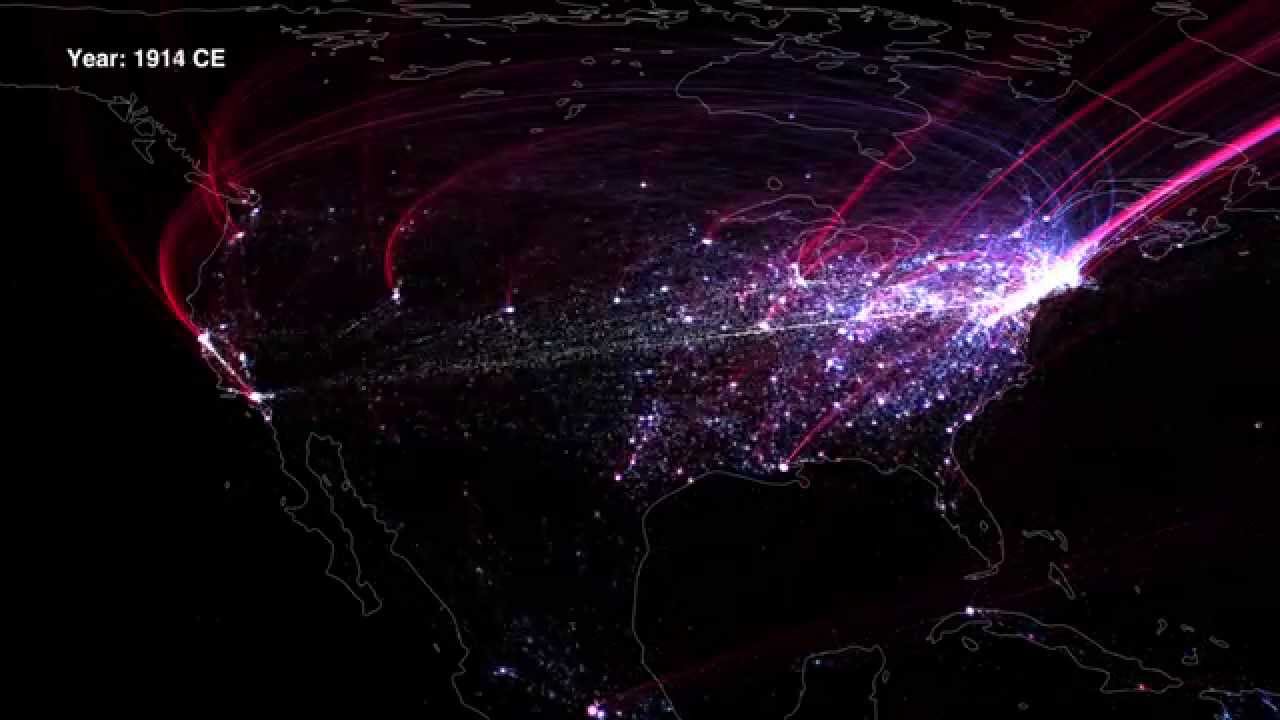Hotspots of cultural history
An interdisciplinary research team has managed to uncover clear migration and interaction patterns, applying statistical analysis to information on where notable cultural figures were born and died. Just published in the journal Science, the study shows that natural science and the humanities can enrich each other and that the humanities can profit from complex network research.

Using statistical methods, an extensive database of the places of birth and death of significant cultural individuals can be used to calculate the cultural significance and interaction of locations in Europe and North America over a period of 2,000 years. This was the conclusion reached by a seven-member research team from ETH Zurich, Northeastern University in Boston and the University of Texas at Dallas in an article published in the current edition of Science. Lead author Maximilian Schich, who holds a PhD in Art History and headed the extensive project. The group included Dirk Helbing at ETH Zurich, Professor of Sociology, who is specialised in modelling and simulation.
“Boring” data revealing exciting research
Birth and death data of cultural figures is perhaps among the most boring sources of information for art historians, admits Schich, “but if you have enough of them, interesting patterns suddenly start to emerge.” The researchers combined the locations of birth and death of over 150,000 people in three internet-based databases and analysed them using statistical methods. The visualisation of the results demonstrates the locations that exhibit cultural attractiveness and identifies the periods during which it was particularly high or low. It also reveals migration and interaction patterns.

The mobility patterns show, for example, how America was gradually colonised following its discovery, with a strong migration tendency towards places such as Hollywood on the west coast. In Europe, the lion's share of cultural development finds its start in Rome. In France, the tendency towards centralisation in Paris begins shortly before the 15th century, i.e. already 200 years before the rise of absolutism. By cumulating the dates of death of renowned individuals – primarily documented for the period after the 13th century – the researchers were able to graphically depict how Paris continually built on its role as a centre of cultural activity. A markedly different dynamics appears in Germany and other European countries: the centralising forces in Paris contrast with federalising competition elsewhere. In Germany, the attractiveness of cities like Munich, Cologne, Leipzig, Heidelberg, Dresden and Hamburg fluctuates continually from the 13th century onwards.
According to the authors, for art history a particular new insight is that it were not just economic centres which were attractive for artists. Furthermore, there is little correlation between the size of a location and its attractiveness as a place of birth or death. In Hollywood, the district of Los Angeles that is particularly attractive for actors and screenwriters, 10 times as many artists have died than were born there.
Mutual enrichment of natural and social sciences
Schich and his colleagues hope that the present study will contribute to overcoming traditional prejudices, which tend to exist between the natural sciences and the arts and humanities at many academic institutions. One such example is the notion that natural scientists are interested in general laws of nature while historians are fascinated by details. The new research approach unites the two. It provides a data-driven tool, a “macroscope”, to spot patterns and trends in the data. At the same time, it helps identify deviations and peculiarities. “Our approach can work like an atlas, making it easier to see where a more in-depth examination would be promising,” explains Schich. Furthermore, the combination of dates of birth and death with data from Google n-grams can even automatically assign activity patterns to historical events. This makes cultural history more readily accessible to non-experts as well. Schich is convinced: “In the long-run, methods of data-driven, quantitative social and cultural sciences will help us to better understand our cultural heritage and how it came into being through the interaction of people and ideas.”
Seven researchers and a plethora of disciplines

Publications by arts and humanities scholars in the journal Science, which is known mainly for publishing research from the natural sciences, are extremely rare. This particular publication required the collaboration of seven researchers from various fields such as art history, networks science, complexity research, computational social science, information design, physics and mobility studies. In the future, the developed method could be extended for further statistical data analyses of “knowledge graphs” on the Internet. Knowledge graphs are structured databases with information on people, properties, places, periods and events, which serve companies such as Google and Facebook to offer their information-based services. Art history, the humanities and the social sciences could therefore all profit from a new macro-perspective on particular events.
Literature reference
Schich M, Song C, Ahn YY, Mirsky A, Martino M, Barabási AL, Helbing D: A network framework of cultural history. Science 2014. 345: 558-562, doi: external page 10.1126/science.1240064

Comments
No comments yet